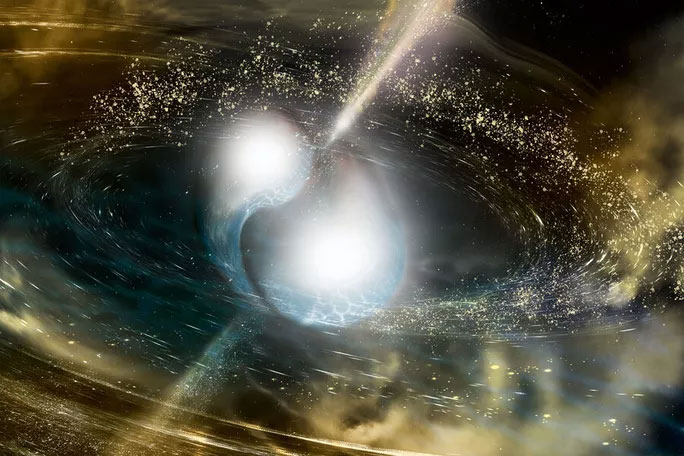For a heavy element like gold or platinum to come into existence, the protons within the atom need to be compressed under immense energy. What force is powerful enough to provide the world with these precious metals that captivate people is the question that cosmologists have been trying to answer recently.
According to Phys.org, there have long been two most supported hypotheses regarding the creation of gold and platinum: one is the merger of two neutron stars, and the other is the merger between a neutron star and a black hole.

A merger of two neutron stars – (Photo: National Science Foundation LIGO/Sonoma State University/A. Simonnet).
Neutron stars are small but are considered the “monsters” of the universe. They are typically the result of the death of a massive star, accumulating super energy from the preceding living object to become something small yet immensely powerful, with a magnetic field about a billion times that of Earth.
Research from two American institutions, the Massachusetts Institute of Technology (MIT) and the University of New Hampshire, has confirmed that the first hypothesis is reasonable, based on the comparison of heavy metal production between the two merger models.
Neutron stars are already powerful, and the collision and merger of two identical “monsters” create an even more tremendous energy field, compressing the protons within the atom together to form heavier elements, with increasing energy leading to the creation of heavier substances, culminating in gold and platinum.
The origin from the merger of a neutron star and a black hole has been ruled out for a simple reason: despite also being two super-energy “monsters,” the model—based on data collected by the two observatories LIGO and Virgo—suggests that a black hole is likely to emit jets and expel heavy metals before fully engulfing the neutron star.
This research was recently published in the scientific journal Astrophysical Journal Letters.


















































